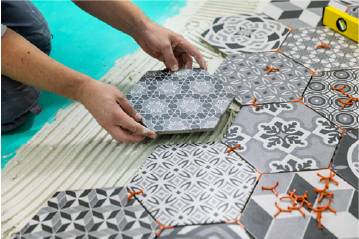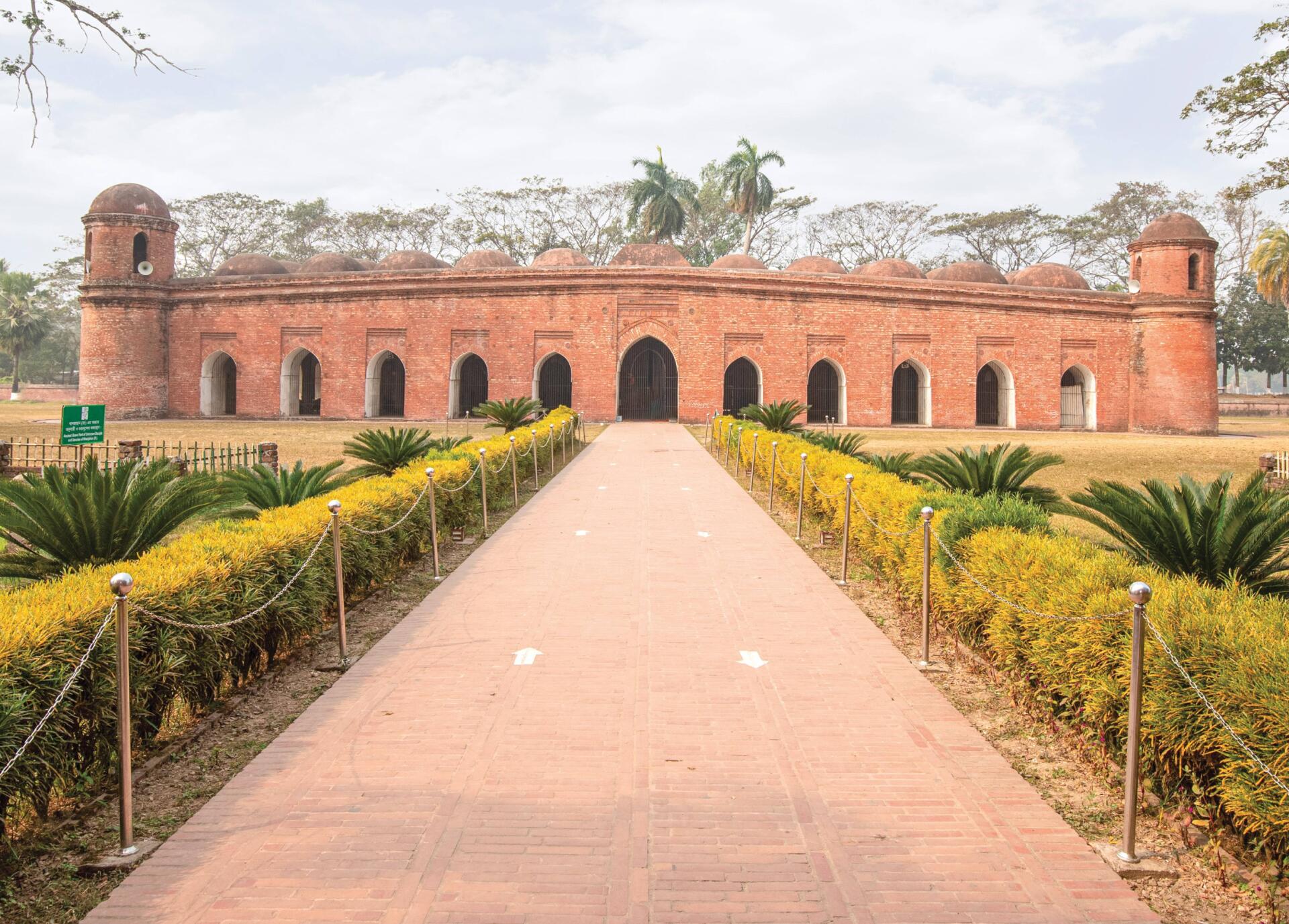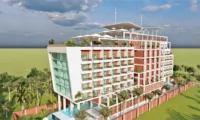7TH ISSUE

CERAMIC EXPORTS BUT CHALLENGES THWART INDUSTRY GROWTH
Bangladesh’s ceramic industry shows signs of recovery from the global pandemic effects with much higher potential, in terms of both domestic and foreign market demand apart from enthusiasm among and endeavours by the entrepreneurs to see it shining. However, the ceramic sector growth has slowed since manufacturers cannot deliver products on time owing to disruption or shortage of supply of gas as the key factor of production. Bangladesh’s exports of ceramic products rose to a four-year high in the 2022-23 fiscal year but could not yet match the level of exports recorded in 2018-19 fiscal year, the year before the pandemic struck the country. The country’s export earnings from the ceramic sector stood at $43.39 million, 13.22 per cent lower than the target of $50 million export set for the fiscal year 2022-23. It was still about 5.0 percent higher than the earning year before. The export of ceramic products was $41.36 million in 2021-22, $31.11 million in 2020-21, $27.97 million in 2019-20 and $68.97 million in 2018-19, according to Bangladesh Export Promotion Bureau (EPB). The country exports ceramic products to 53 countries and the domestic market size of ceramic items is around Tk 80 billion. These figures underline the fact that the country’s ceramics industry has turned into a booming manufacturing sector over the years, cashing in on growing demand both in domestic and international markets. “Manufacturers could not run factories at full capacity due to inadequate supply of gas. This was the main reason the sector did not achieve expected export growth in the last fiscal year,” said Irfan Uddin, General Secretary of the Bangladesh Ceramic Manufacturers and Exporters Association (BCMEA). Also, he added, the demand in the international market has not increased unlike expectations, due to the Ukraine-Russia war. The gas crisis hit industries last year after the government paused purchasing liquefied natural gas directly from the international spot market to stop depletion of foreign currency reserves, leading to a drastic fall in energy supply. Mr Irfan Uddin said manufacturers did not get the gas supply for around 12 hours a day since last October. “So, we could not make products on time. As a result, we were not able to supply goods against around 30 per cent of the orders,” said Irfan Uddin, also Director at FARR Ceramics Ltd. He, however, appreciated the government for providing a 20 percent cash incentive against exports of ceramic products, terming this as encouraging for the ceramic exporters. M.A. Jabbar, Managing Director at DBL Ceramics, said the business of the ceramic sector is going through a difficult stage due to increase in the production cost and the gas crisis. “Absence of uninterrupted gas and power supply and increase in the cost of production hampered production, ultimately affecting the exports of ceramics,” he argued. The entrepreneur said owing to disruptions in gas and power supply, the sector has faced a big challenge in maintaining quality of products Local ceramic manufacturers mainly produce four types of products: tiles, tableware and sanitaryware and ceramic bricks. Of the 70 manufacturers currently operating, twenty produce tableware, thirty two make tiles and the rest produce sanitaryware and ceramic bricks. Bangladesh mainly ships tableware and has added tiles, sanitaryware & ceramic bricks to the export basket in recent years. According to Mr Jabbar, considering the ongoing high inflation environment, manufacturers are not in a position to raise prices of their products despite an increase in their cost of production. As a result, the profit margin has plunged to the lowest level Ruslan Nasir, Deputy Managing Director of Mir Ceramic Limited, said tiles manufacturers export on a limited scale and contribute an insignificant amount to the export basket. The company mainly exports to the north-eastern states of India. Ruslan Nasir said local tiles manufacturers are focusing on the local market since demand has grown over the past decade, thanks to rapid urbanisation. “There is a lot of competition in the tiles segment globally. And since the sector is dependent on imported raw materials, it will take time for the local producers to grab a significant share of the international export market.” He, however, sees a bright prospect of the tiles segment since Bangladeshi manufacturers produce world-class products. BCMEA President Md. Shirajul Islam Mollah said, “At present, two major problems of the ceramic sector are gas and dollar-crisis. It is facing a challenge. We are not getting uninterrupted gas even with increased prices. Most of the factories in the ceramic sector are in Gazipur. Due to the gas crisis, the production of factories here has dropped to 40-50 percent. Again, the gas situation is somewhat better in Bhola and Habiganj, but there is a problem in Narsingdi and Rupganj. Production of most factories is disrupted due to the gas crisis. Overall production is going down by 40 percent due to the gas crisis. So the production cost is also increasing and exports are facing challenges.” Ceramic manufacturing companies are also facing problems in opening letters of credit (L/Cs) for import of raw materials due to dollar shortage. He said 90 per cent of the raw materials of ceramic products are imported. Meanwhile, the increase in dollar and gas crisis, on the other hand, due to the increase in ship fares, the cost of production has increased by 30-35 per cent. Due to the gas crisis, the tiles could not be produced according to the market demand in the last winter season. It is not possible to use more than 60-70 per cent production capacity of the factory According to the National Board of Revenue (NBR) data, imports of mineral clay — ‘China clay’ and ‘Ball clay’, the main raw materials for ceramic products — fell by 17 per cent in the fiscal year 2022-23. Now, it takes 15 days to open L/Cs for raw material imports compared to only two days for the purpose, due to the dollar crisis. Thus there is a shortage of raw materials in the factories. He said, ‘All in all, the ceramic sector
Read More
Monno’s Modular Aesthetics in Simplicity In coherence with the décor, tableware can add grace and is an element that never goes unnoticed
The word “tableware” means any “dishware” used to serve food on. This can be from glassware and ceramic tableware to even banana leaves. The word takes under its umbrella, literally anything that is used to serve food on. Tableware is now categorised into four segments- serveware, silverware, dinnerware, and glassware. Finding the perfect tableware to compliment your taste can be a hectic feat. This can, however, be countered with a thorough online research or a few visits to local showrooms. To truly understand the design concept and versatility of a ceramic product, you need to dive deeper. And in this segment of Ceramic Bangladesh Magazine, we intend to guide you through a product we deemed fit and worthy for an exclusive mention. FEATURED PRODUCT Here, in this segment, the tableware we decided to putout is Monno’s modular collection, launched this year. Monno is one of the largest ceramic manufacturers as of now, and initiated with porcelain tableware. With the esteem that comes with the brand, weighed furthermore by a young British designer called Billy Lloyd, the Modular collection has been crafted with the aim to mostly export. Monno, sole manufacturer of this collection, has crafted the Modular collection as a downright product for catering services, events, hotels and restaurants, among other hospitalities. Currently the collection is being exported to the UK, Italy, India, and Qatar and is also available in Monno’s flagship outlets. THE DESIGNER Designed by a British artist named Billy Lloyd, the Modular Collection features sleek and slender design wrapped in white. Billy Lloyd, the young designer, spent his earlier years working as an apprentice to Julian Stair (an acknowledged potter), and learned to throw porcelain on a potter’s wheel. After four years of apprenticeship, he opened his own shop and soon became a popular ceramic designer in London. Billy Lloyd joined Monno later on, as a creative director. Regarding the upcoming, Mr Lloyd said: “Recently, we launched Modular, a versatile bone china hospitality concept and a porcelain range entitled Bistro, which is a stacking collection of porcelain tableware with a European aesthetic. Our hope is always that we can play a role in evolving the taste and direction of the domestic market in Bangladesh, while simultaneously appealing to the ever-important export market. What is to come next… watch this space Made of Bone China, the Modular collection is perfect for a restaurant or a hotel setup; and also for catering services. The tableware is visually elegant, stackable, and durable for a busy venue. The maximum size being 380mm X 130mm oval dish, all products of this collection are made minimally for an average sized spread on a table. The Modular collection was inaugurated in London, and has gained popularity already. We don’t know much about the local response but considering the elegance of the shapes we expect to see this product flourish. “Working as Creative Director for Monno for the last five years has been very creatively rewarding as I have been allowed the opportunity to touch on numerous facets of the company, from design to business development,” said Billy Lloyd. “My role is not only concerned about tableware design, but also very much about how we communicate the company as a brand especially to the international export market, both Retail and HoReCa. I have learnt a great deal and am grateful to the Monno family for instilling such trust in my vision.” Written by Chisty Rahim
Read More
UNESCO World Heritage Site SHAT GAMBUJ MOSQUE Architectural Evidence of History
Bangladesh, the land of beauty, is glorified with various heritage sites which prove rich culture and heritage and blend of beautification in every sphere of the architectural works. The administrative district of Bagerhat under Khulna division of southern Bangladesh is famous for its archaeological richness. The historic mosque city of Bagerhat, the Shat Gambuj Mosque (Sixty Dome Mosque) is the most magnificent and the largest enclosed type mosque built by Khan Jahan Ali in Bengal. It is the largest historical mosque in Bangladesh from the sultanate period (1352–1576). It has been described as one of the most impressive Muslim monuments in the whole of South Asia. It is famous for its sheer size and stunning architecture among many heritage sites. The Shat Gambuj Mosque is located five kilometers from the main town of Bagerhat. It is situated by the eastern bank of the Ghoradighi which has increased the beauty of the Mosque remarkably. The amazing construction work of the mosque started in 1442. It ended in 1459 and is a proven example of glorious history and beauty declared by UNESCO as a world heritage site in 1985. In the mosque, Muslims offer prayers (Namaz) five times a day and Eid prayers also take place here. Every Friday at noon, more than 5,000 people pray Jumma prayers here and visit the Shat Gambuj Mosque and explore the beauty of historical evidence since long-gone centuries. The building of Shat Gambuj Mosque began in the middle of 15th century with establishment of a Muslim colony near the mangrove forest, the Sundarban, another UNESCO heritage site in Bangladesh. The colony was founded by a revered general named Khan Al-Azam Ulugh Khan Jahan. He was also a great and famous Muslim saint and the local ruler of Khalifabad (present Bagerhat). Khan Al-Azam Ulugh Khan Jahan conquered the greater part of southern Bengal and the prosperous area was named Khalifabad in honour of the reigning Sultan Nasiruddin Mahmud Shah (1435-59). Khan Jahan ruled the region with the seat of administration at Haveli-Khalifatabad, identified with present Bagerhat, till his death in 1459. He had built many structures for the well-being of the people in that locality. He made water tanks, mosques, madrashas etc. Shat Gambuj Mosque is his greatest creation. Khan Jahan Ali was widely known as the great architect of historical mosques around the South Asian Subcontinent, who embellished the entire Bagerhat region with more than a dozen mosques under the patronage of the Sultan. The ruins of which are focused around the most imposing and largest multi-domed mosques in Bangladesh. The legacy of Khan Jahan Ali is vividly evident in his architectural works. He preached in this affluent region during the reign of Sultan Nasiruddin Mahmud Shah. Shat Gambuj Mosque is a wonderful proven archeological beauty that is the signature of the 15th century. The planning of the mosque is a living example of the Islamic architecture and the decorations remind us of the blend of Mughal and Turkish architecture. The Mosque is also known as the Sultanate Mosque, which was used for ruling the area and a court at that time. The mosque was not used only for prayers, but also as a madrasha and a parliament assembly hall. Though the Shat Gambuj Mosque refers to a mosque with 60 domes or Roof Gambuj. However, it actually has 77 squat (low) domes, arranged in seven rows of eleven, and two-storied four high domes or tower on four corners, bringing the total to 81 domes. Two of these four high domes or towers were used for Azan or the call for prayers. On the east side of the mosque, there are 11 arched doorways, while the north and south each have seven doors. These arched doorways also providing ventilation and light in the hall. The interior is divided into seven longitudinal aisles and 11 deep bays by 60 slender stone columns, which culminate in numerous arches that support the roof. The vast prayer hall of the Mosque has walls of unusually thick, tapered brick in the Tughlaq architecture style of Delhi and a hut-shaped roofline that anticipates later styles. The inside space of the mosque is 48m x 33m (160 feet x 108 feet = 17,280 sq feet), and the wall of the mosque is almost six feet (1.8m) thick. To enhance the mosque’s attractiveness and give it an exceptional appearance, the entire structure is constructed of red burned mud or bricks. The Turkey style of architecture was followed using tempered brick in the mosque. The detailing of the mosque is prepared with terracotta decoration. So anyone can notice the exquisite detailing around the doors with beautiful design. Inside the mosque, the walls are crafted based on the former Muslim cultural tradition. The atmosphere inside the mosque is cool and comforting for the unusual thickness of the wall. Inside the mosque, among the ten “Mihrabs” the central one was built of stone and a special doorway had been built in “Qibla”. The central mihrab, which corresponds to the central nave, is bigger than its flanking counterparts and shows a rectangular projection on the outer side, carried up to roof level. These mihrabs are also decorated with stonework (grey sandstone) and terracotta and the floor of the mosque is made of brick. Its ornamentation is in the Muslim style of carving in shallow and low relief. The mosque yard is surrounded by an old, ornamented boundary wall. The enclosed compound was originally entered through two gateways – one in the east, now restored and repaired, and the other in the north, no longer extant. The eastern gateway, facing cardinally the central archway of the mosque proper, appears to be a monument by itself. It measures 7.92m by 2.44m and consists of an archway having a span of about 2.44m with a beautiful curvature on top. Now there is a picnic spot beside the mosque area around the historical Ghora Dighi. There is a museum in the mosque area which is situated to keep the historical
Read More











